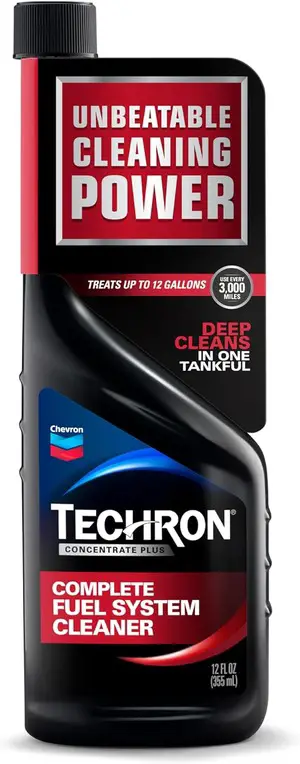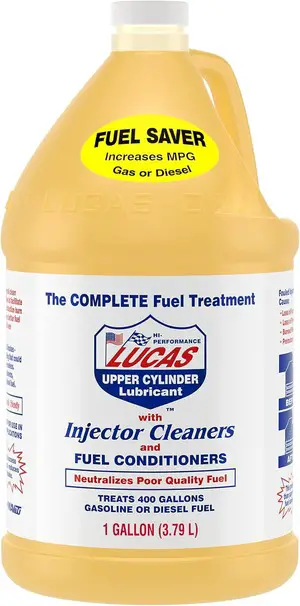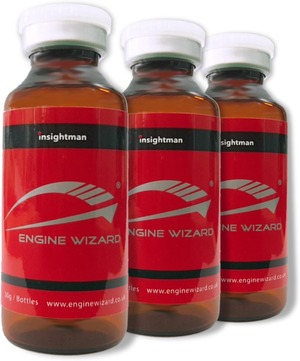9 Common John Deere X350 Problems (Solutions Included)

Without a doubt, one of the most popular lawnmowers on the market right now is the John Deere. Apart from providing lawn mowing services, the John Deere X350 can also be used for snowplowing. This tractor from the John Deere X300 series is the best choice for your lawn because of its versatility.
The John Deere X350 comes with a variety of mowing decks, so you can select the one that best suits your needs. Despite its outstanding performance, there are still some problems that could occur when using this lawnmower.
For its exceptional cutting performance, adaptability, and durability, the John Deere X350 lawn tractor is well-liked by both homeowners and landscapers. It is not immune to issues and malfunctions, though, just like any other device.
These tractors aren’t perfect, though, despite having these qualities. What typical problems with the John Deere X350 are there? The most frequent issues with the John Deere X350 are transmission problems, engine problems, belt problems, steering problems, deck limitations, and electrical annoyances. This article covers the most common problems with the X350 lawn tractor and offers solutions.
Common John Deere X350 Problems and Solutions
We have compiled a list of every potential issue that users of the JD X350 may encounter, along with a wealth of solutions and strategies to help you put an end to your nightmare, after carefully examining numerous reviews, forums, discussions, and surveys. Examine these in the section that follows:
1) Engine Problems
When looking up common problems with the X350 tractor, you may find several engine-related problems. Among these, jerky running, load issues, excessive overheating, and backfiring are the most noticeable.
Customers have reported that their X350 occasionally misfires or operates a little rougher than usual. Most of the time, the carburetor is where the problem lies at its core. Moreover, changing the ignition module is a typical solution for problems with the carburetor.
The misfires and the problematic starting might require changing the starter solenoid so here is a cheap option:
Making sure the correct electrical connection is made, examining whether the cooling fan is operating, and replacing the choke cable can also potentially fix the problem. Thus, speaking with a qualified expert would be the best course of action in this situation.
2) Unstable Terminals or a Bad Battery
Your lawn mower won’t start when the battery runs out on a John Deere. Make sure the wires are secure and the connectors on your battery cables are in good condition by checking them. Clean the terminals if there is any corrosion on them.
Make use of a baking soda and water solution (two cups water and three generous tablespoons baking soda) along with a wire brush. Use a voltmeter to make sure your battery is operating correctly. About 12.7 volts should be displayed. Your battery needs to be charged if its voltage is less than 12.7 volts.
If even after cleaning the terminals it’s not charging, then the problem can be somewhere else along the power system, for example the starter solenoid (get one here) or the relay 12V 5 Terminal (buy new one). It’s cheap to replace them so do that before getting a new battery.
If the old battery loses charge, you should replace it. Battery replacement doesn’t need to be expensive. We recommend, instead of going for an original one, just get a alternate brand battery that’s compatible with the John Deere like this one.
3) Unreliable Safety Switch
To protect user safety, the operator’s presence control system on your lawnmower may use a variety of switches, depending on the model. The mower has buttons that are placed there for your safety. There are various safety switches, one of which will turn off the engine if the driver exits the vehicle while the mower deck is moving.
For instructions on using the mower’s safety features, please refer to the manual. A broken switch might prevent your John Deere lawnmower from starting up. You can turn off a safety switch temporarily if you think it may be broken.
A multimeter may also be useful in locating a faulty switch. If a lawnmower’s safety switch is broken or missing, never operate it.
Each year, a large number of people suffer injuries from rolling or falling off a mower. For any piece of machinery, operational safety switches must be maintained. You never know when you’ll be in dire need of their assistance.
4) Overuse of Fuel
If they run their lawnmower with more fuel than usual, nobody will be happy. Merely considering the price makes it easy to take other factors into account. A lot of people get annoyed when their John Deere X350 uses too much fuel – a frequent grievance expressed by owners of this particular model.
- John Deere Fuel-Protect Gasoline Stabilizer to keep your engine healthy
Honestly, this should worry you a little bit. It is common practice to blame the carburetor and throttle of the John Deere X350 lawn mower for its higher-than-average fuel consumption.
Checking that the carburetor is calibrated correctly in this instance might help you solve the issue. If the issue gets too much to handle, you can also consult a mechanical engineer for advice.
5) Steering Problem and Drive Belt
Your John Deere lawn mower’s steering may get harder to maneuver over time. This could be the consequence of a worn-out bushing or a bolt that has come loose. These two factors limit the necessary gear engagement required for direct steering.
Replacements for the deck drive belt can vary in size depending on the model. There are some of the available ones online:
- Lawn Mower Deck Drive Belt Replacement for John Deere X350
- Deck Belt 1/2″ x 144.8″ Fit for John Deere X350, V-Belt Made with Kevlar
- Lawn Mower Deck Belt 5/8″ x 74 3/4″ Made with Kevlar for John Deere X350
In multiple conversations, some users have expressed dissatisfaction over their X350’s inability to turn the steering as they had expected. You have to have it inspected by a mechanic right away if something similar occurs to you. The smaller gear sectors are usually where the issue lies.
6) Black Smoke is Emanating From the Engine
It’s possible to assume that a black smoke cloud coming from an X350 engine indicates the car is getting older. But the problem still occurs with recently acquired machines as well. When a new X350 lawn mower adjusts to its new environment, it may emit white or blue smoke.
The engine’s piston rings are seated and any leftover oil that might have coated the components during manufacture is burned off while the engine is breaking in.
Oftentimes, it’s always a good idea to change the oil filter. Improper filtration of the oil can make the engine malfunction.
Although the break-in period may extend up to fifty hours, depending on the engine’s intended use, John Deere and Company recommend that a new engine be run hard for at least five hours before its first use.
Even better, would be to change the entire set of filters and oil, to make sure that no particles are left in the old oil:
7) Overheating Issues and Oil Change
Overheating problems with the John Deere x350 engine are a common occurrence. When the X350 engine reaches a temperature that makes it unsafe to run, it will either shut off right away or refuse to start again after being turned off.
An overheated mower used over time may cause internal engine component damage. When the engine overheats, stop it and find a solution before attempting to restart it. Overheating, however, can also be the result of user error.
Insufficient oil disperses heat and reduces friction, causing the engine to overheat. An engine with too much oil in it may also overheat.
Our recommendation is to service all the filters and change the oil at once and on a regular basis, just buy a complete package with everything needed for a full servicing:
The John Deere x350’s engine suffers greatly when it is driven through dense, wet grass for extended periods. This extra strain could cause the motor to overheat.
8) Problems with Operating a Slope
Steep terrain may cause your mower to perform poorly. The John Deere X350 is also prone to another common issue, which is that it performs poorly in gradients. Even the tires don’t function properly on slopes, making breaks useless.
In those situations, it is best to use the mower in its standard configuration—that is, without any extra attachments like bumpers, brush guards, mulch control systems, carts, or other attachments—and avoid operating it on slopes with angles greater than 15°. A detailed section about this can be found in the JD X350 Operations on Slope manual.
Blades can also be damaged in this case if you’re not careful. If you do need a replacement blade then these will do:
9) Seats Could Soon Wear Out and Tear
One more issue that may come to light is how easily the seats can get worn out and torn. It would be possible to simply replace the seats, but that would incur some expense. It’s going to be worth about $120,000.
Another cheap fix is to apply duct tape to the damaged areas; it might not look great, but if money is tight, it will do the trick.
What we’d best recommend it to just get a new cover every now and again to avoid any damage or wear of the seat in the first place.
Alternatively, you can buy a brand new seat:
Common Issues with John Deere X350 Razor Blades
- Dull Blades: Over time, the razor blades can become dull, resulting in poor cutting performance, uneven grass heights, and increased strain on the mower engine.
- Damage or Chipping: Blades may chip or become damaged if they hit hard objects like rocks, roots, or debris while mowing, leading to ineffective cutting and potential mower damage.
- Rust and Corrosion: Exposure to moisture and debris can cause blades to rust, affecting their performance and lifespan.
- Worn Edges: Continuous use can lead to worn edges, causing the blades to tear rather than cut the grass cleanly, which can harm the lawn.
- Improper Installation: If blades are not installed correctly, it can result in vibrations, uneven cutting, and increased wear on the mower.
How to Sharpen Your Blades
Steps to Replace John Deere X350 Razor Blades
- Safety First: Turn off the mower and disconnect the spark plug wire to prevent accidental starts during maintenance.
- Elevate the Mower Deck: Use a mower lift or jack to raise the mower deck for easy access to the blades. Ensure the mower is stable and secure.
- Remove the Blade Bolts: Use a socket wrench to remove the bolts securing the razor blades to the mower deck. Keep track of the washers and any other components.
- Change Deck Spindle (optional): The spindle is what holds the blades attached to the deck. This can also get worn out quickly, and we recommend changing this whenever you change the blades. There are cheap universal ones like this one.
- Take Off the Old Blades: Carefully remove the dull or damaged blades from the mower deck. Inspect the blade adapter for wear or damage and replace if necessary.
- Install New Blades: Position the new razor blades on the spindle, ensuring they are oriented correctly (typically, the curved side should face upward). Reattach the bolts and tighten them securely, using the manufacturer’s torque specifications.
- Check Blade Alignment: Ensure the blades are properly aligned and balanced. This prevents vibrations and ensures even cutting.
- Reconnect the Spark Plug: Once the blades are installed, reconnect the spark plug wire to restore power to the mower.
- Test the Mower: Start the mower and perform a test run to ensure the blades are functioning correctly. Check for any unusual vibrations or noises during operation.
Keep Your Mower Healthy
|
Chevron Techron Concentrate Plus Fuel System Cleaner 
Shop Now
|

Shop Now
|
Engine Oil Additive, Engine Treatment, Wear & Tear Protection for Gasoline & Diesel 
Shop Now
|
Is the John Deere X350 Worth It With All These Issues?
Despite its flaws, the John Deere X350 is a powerful and attractive lawnmower, and since no equipment is flawless, you shouldn’t ignore it in favor of a better model.
The lawnmower has many happy customers because of the great service it provides. These issues won’t arise with every X350. Finding out as much as you can about the John Deere x350 and determining whether it will meet your mowing needs are also crucial.
FAQs
How long is the anticipated lifespan of the John Deere X350 tractor?
The JD X350 tractor is covered by a bumper-to-bumper warranty for four years or three hundred hours, whichever comes first. The best part of the warranty is that it saves you hassles because one company handles all of the paperwork.
What is the John Deere X350 tow vehicle’s maximum load capacity?
The John Deere X350 can tow up to 600 pounds, which is more weight than it can manage when compared to other tractors in this class.
How much fuel can a John Deere X350 tank hold?
Longer operating intervals between fill-ups are made possible by the large 3.3 US gal (12.5 L) fuel tank.
Related Post:
- 7 Common John Deere RSX 850I Problems (Solutions Included)
- 7 John Deere 320 Skid Steer Problems (Solutions Included)
- 14 John Deere Gator 620i Problems (Solutions Included)
- Cub Cadet vs John Deere vs Husqvarna – Choosing the Best
- Craftsman vs John Deere Riding Mower (Comparison Guide)
- 8 Common John Deere 333G Problems (Solutions Included)
- 8 Common John Deere 5075E Problems (Solutions Included)
- 6 Common John Deere 3025E Problems (Solutions Included)
- 9 Common John Deere X300 Problems (Solutions Included)
For more tractor problem solutions visit here and for more guides related to mowers visit Mowers Guide

